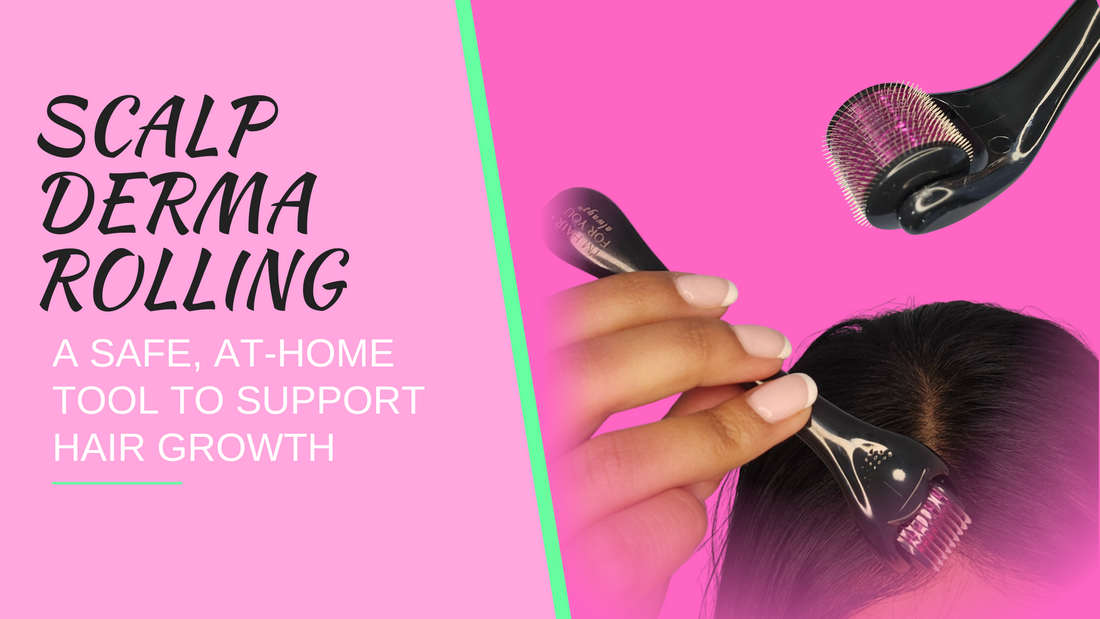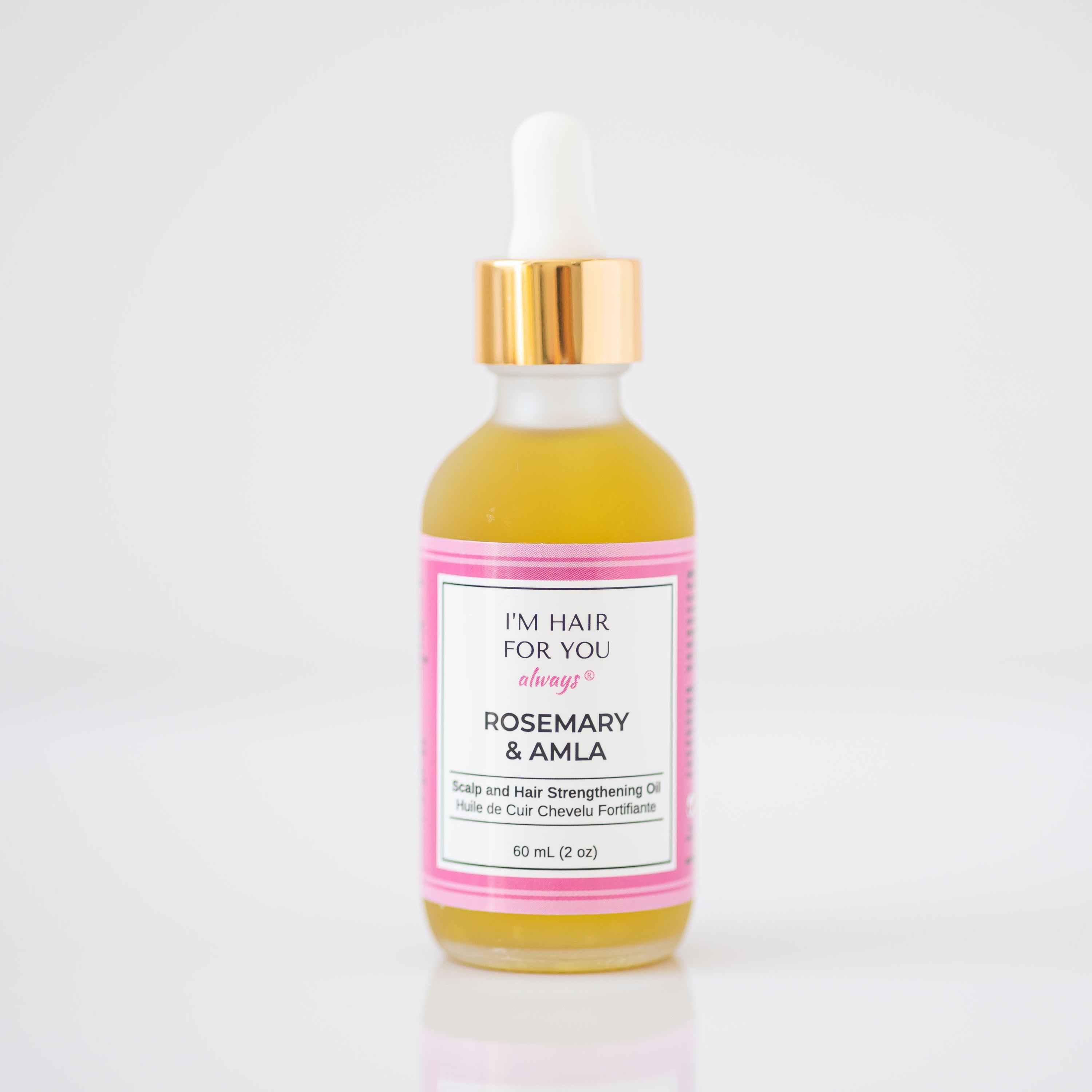Hair loss can be a distressing experience, but understanding the different types and causes of alopecia is key to finding effective and natural solutions. In this blog, we will explore the world of alopecia, including alopecia areata, traction alopecia, and androgenic alopecia, while shedding light on the symptoms, causes, and treatments. We will also discuss how our hair oil enriched with rosemary and amla, designed to promote hair growth and combat hair thinning can help. Let's dive in and discover the secrets behind growing your locks!
Alopecia Areata: Understanding the Mysterious Hair Loss
Alopecia areata is an autoimmune condition that causes sudden hair loss in patches. The exact cause is still unknown, but it is believed to be a result of genetic and environmental factors. Individuals with alopecia areata may experience the distressing symptoms of patchy hair loss, which can affect the scalp, eyebrows, and even the beard area. The immune system mistakenly attacks the hair follicles, leading to hair loss.
Individuals with alopecia areata can benefit from lifestyle changes and self-care practices. Managing stress, maintaining a healthy diet, and protecting the scalp from harsh chemicals and excessive heat can all contribute to healthier hair growth. Some other healthy hair practices include using a silk pillow case, switching to 100% silk scrunchies and stimulating your scalp with our scalp brushes. Seeking support from support groups and organizations specializing in alopecia areata can provide valuable resources and emotional support. Follow us on Instagram to stay connected and join our community of women supporting women.
Traction Alopecia: Unveiling the Toll of Styling Choices

Traction alopecia is a type of hair loss caused by excessive tension or pulling on the hair shaft. This condition often occurs due to tight hairstyles like braids, ponytails, or extensions. The repeated strain weakens the hair follicles, leading to hair breakage and thinning. Traction alopecia is particularly common among individuals who frequently wear hairstyles that pull on the hair, such as athletes who wear tight caps or swimmers who constantly wear swimming caps.
Recognizing the signs of traction alopecia is essential for taking preventative measures and embracing hair-friendly styling alternatives. Common symptoms include a receding hairline, thinning edges, and hair breakage along the hairline. If left unaddressed, traction alopecia can cause permanent hair loss.
Preventing traction alopecia involves adopting gentle hair care practices and avoiding hairstyles that put excessive tension on the hair. Opting for looser braids, avoiding tight ponytails, and using hair-friendly accessories, such as silk scrunchies, can help distribute the tension evenly. Additionally, being mindful of the weight and attachment methods of hair extensions is crucial, as heavy or improperly applied extensions can contribute to hair loss.
Androgenic Alopecia: The Genetic Factor in Hair Loss

Androgenic alopecia, commonly known as male or female pattern baldness, is the most common form of hair loss. It is influenced by both genetic and hormonal factors. Men typically experience a receding hairline and thinning crown, while women may notice overall hair thinning or widening of the part. Androgenic alopecia is primarily driven by the hormone dihydrotestosterone (DHT), a byproduct of testosterone.
Genetic predisposition plays a significant role in androgenic alopecia, as individuals with a family history of hair loss are more likely to experience it. While it is challenging to prevent or reverse androgenic alopecia entirely, there are natural ways to slow down the progression and stimulate hair growth. DHT-blocking ingredients, such as Rosemary Oil and lavender oil, can help inhibit the conversion of testosterone to DHT. Additionally, incorporating essential nutrients, such as biotin, vitamin D, and iron, into the diet can support healthy hair growth. Our signature Rosemary and Amla Scalp and Hair Strengthening oil contain all natural ingredients to combat androgenic alopecia. We recommend using it 4 hours before washing your hair, at least twice a week.
Understanding the Symptoms: Identifying Hair Loss and Thin Hair

Recognizing the symptoms of alopecia is crucial for early intervention and effective treatment. For individuals with alopecia areata, the sudden appearance of round or oval-shaped bald patches is a common sign. These patches can vary in size and may merge, leading to more extensive hair loss. Some individuals may experience itchiness or a tingling sensation in the affected areas before hair loss occurs.
Traction alopecia manifests as thinning hair along the hairline or where tension is applied. Initially, individuals may notice a widening of the hair part or a receding hairline. Over time, the hair may become brittle, and the affected areas may develop bald spots. It's essential to address traction alopecia promptly to prevent irreversible hair loss.
Androgenic alopecia showcases a gradual thinning of hair, either at the crown or in a specific pattern. Some often notice a receding hairline, followed by thinning on the crown, resembling the shape of the letter "M." Women may experience overall hair thinning, especially at the top of the head, while the hairline remains intact. In both cases, seeking early treatment can help slow down the progression and maintain existing hair.
Natural Treatments for Alopecia: Nourishing Your Scalp and Hair

When it comes to combating hair loss and promoting regrowth, natural treatments can play a significant role. I'm Hair for You Always has formulated a powerful Rosemary and Amla Scalp and Hair Strengthening Oil, which harnesses the power of rosemary and amla, two potent ingredients known for their hair-strengthening properties. Rosemary stimulates blood circulation to the scalp, promoting hair growth, while amla nourishes the hair follicles and helps prevent hair thinning. This natural oil, infused with other carefully selected ingredients, can improve the overall health of your hair, making it stronger, thicker, and more resilient while promoting new hair growth.
Using the Rosemary and Amla Scalp and Hair Strengthening Oil as part of your hair care routine can provide numerous benefits. Before application, gently massage the oil into your scalp to stimulate circulation, nourish the hair follicles, and promote healthy hair growth. Leave it on for a few hours and then wash it off with a mild shampoo. Regular use of the oil can help improve hair strength, reduce breakage, and enhance overall hair health.
In addition to using natural hair oils, incorporating a balanced diet rich in essential nutrients can support healthy hair growth. Foods rich in vitamins A, C, and E, as well as biotin, zinc, and iron, can contribute to strong and vibrant hair. Hydration is also crucial, so remember to drink plenty of water to keep your scalp and hair hydrated from within.
Understanding alopecia and its different forms is essential for effectively managing hair loss and promoting hair growth. By recognizing the symptoms and causes of alopecia, individuals can take proactive steps to address the issue.
Remember, embracing a natural approach to hair care not only helps combat alopecia but also supports overall hair health and confidence. Unlock the power of natural hair care and let your beautiful locks shine!






